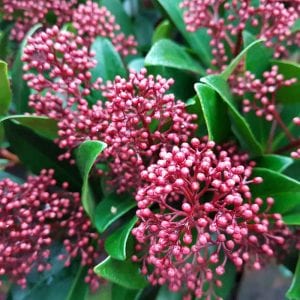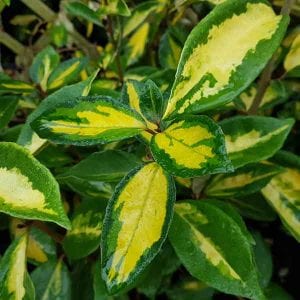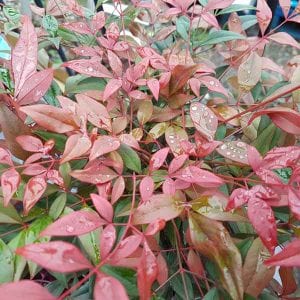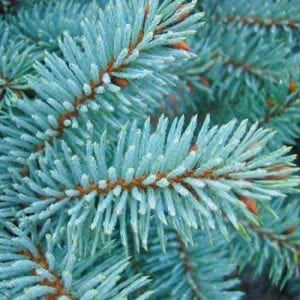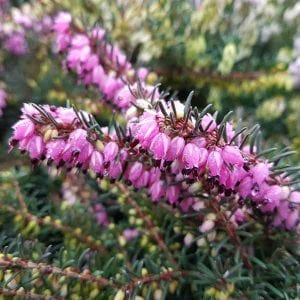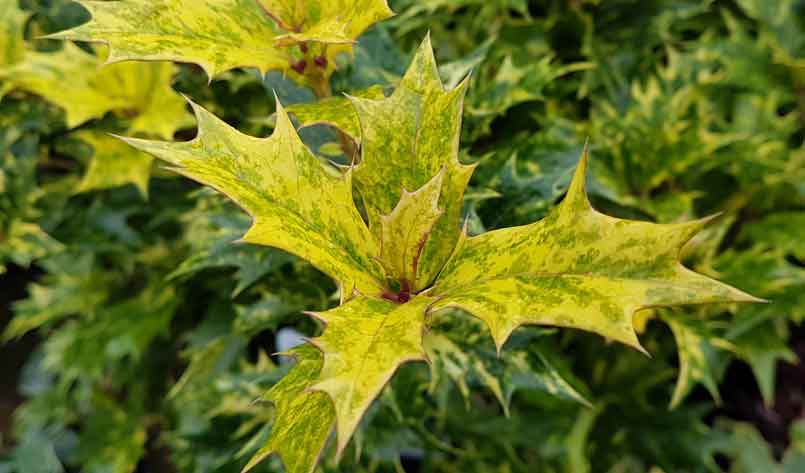
The Winter Beauty of Colourful Evergreens
When autumn gales have stripped the final few ochre leaves from deciduous trees and shrubs, evergreens offer their reliable leaf cover for colour and structure in the garden. They are also useful as Christmas decorations, fragrant bouquets, bird cover and for hosting a spectacular display of hoar frost.[/vc_column_text][/vc_column][/vc_row]
Some evergreen leaves can also be used for culinary purposes. Leaves from Bay and Rosemary plants infuse slowly into cooked dishes with an evocative perfume reminiscent of medieval banquets; great to welcome guests in the New Year. After the festive dining has subsided, thoughts perhaps turn to eating more healthily and detoxing. Try the edible and delicious, aromatic, mahogany red berries of the evergreen shrub Ugni molinae otherwise known as Chilean guava “Butterball” which will provide an inspiring source of Vitamin C and antioxidants to kick start your healthy New Year.
How about creating an alternative to the traditional Holly wreath by including Abelia Grandiflora, Eleagnus Limelight, Euonymous Ovatus Aureus, Leucothoe Rainbow, Nandina, Osmanthus Goshiki and Pittosporum Tom Thumb, all shrubs with variegated leaves. Or for winter table decorations: Photinia Red Robin, with Juniper and Spruce (Picea), both emanating distinctive fresh winter fragrance.
Viburnum tinus will quickly grow into larger shrubs, making them suitable for hedging or an elegant border specimen with a profusion of flowers through the winter and spring. Some varieties such as the more compact Viburnum tinus ‘Eve Price’ also carry attractive black shiny berries. The larger leaved Viburnum davidii has bright turquoise blue, egg shaped fruits which are particularly striking during winter. A cold frosty morning may present you with a quandry: stay in the warm and look out at the beauty through glass, or get out there and feel the clean air in your lungs and the afterburn of touching frosty plants with bare hands. Whichever you decide, there’s little better sight than to see Sweet-scented Box (Sarcococca confusa) and Skimmia ‘Rubella’ adorned with multiple spikes of hoar frost. These two slower growing smaller shrubs can be grown close to the house as they are unlikely to be tall enough to exclude light and the fragrance of the Sweet-scented Box will waft through an open window.
Spare a thought for the birds whose summer garden, fully clothed with deciduous leaves to hide in, has now been laid to bare branches. Evergreen shrubs provide cover from the elements and a hideaway from predators at a time of year when this much needed for birds. Our house sparrows particularly favour Aucuba japonica ‘Variegata’ with its large waxy, bright-green leaves speckled with yellow, standing strong against biting winds without succumbing to leaf damage. Birds find it bone dry underneath the shrub’s thick strata which also provides multiple perching layers for the sparrow hierarchy to watch out for feeding time!
For all year round colour, don’t forget the often-overlooked conifers. There is much to offer in terms of different colours, shape, texture and form. Some of our favourites are the Blue Spruces (Picea) and the Dwarf Pines (Pinus mugo) with their striking spiky needles.
Lime tolerant heathers (Erica x darlyensis) are also great in borders or pots for long-lasting winter colour and Hollies (Ilex) brighten any garden.
